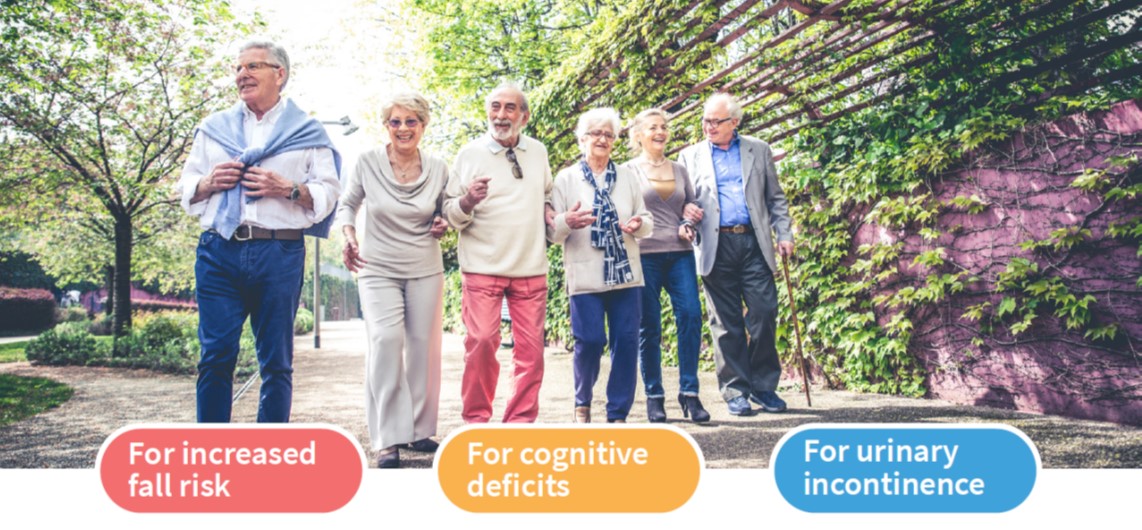VITAAL
An international project of AAL (Ambient Assisted Living Association)

Using walking speed and variability assessment for personalised interventions on Geriatric Giants
The focus of VITAAL is on supporting and reinforcing the reduced physical, mental, social and functional capacities of older people by applying ground-breaking and innovative inclusive design and engineering methods. The project continues with a human-centered integrated approach of establishing an AAL solution that is applicable and adaptable to many of the “Geriatric Giants”, i.e. the “five I’s”: immobility, instability (falls), incontinence, intellectual impairment, and iatrogenic complications. The establishment of a collaborative network between clinicians (e.g. physiotherapists), designers (e.g. IT experts), academia and industry is a basic requirement which enables the advancement of the proposed VITAAL design for autonomous ageing.
To help formulate individualized interventions, VITAAL will consider walking as the sixth vital signal. In fact, in the older population, reduced usual or preferred walking speed is strongly associated with increased risk for disability, cognitive impairment, falls, and all-cause mortality. Therefore, gait speed was proposed as a simple geriatric assessment to identify older adults with increased mortality risk and was suggested to be “the sixth vital sign”. VITAAL will use walking speed as a simple geriatric assessment to identify training needs of older adults and use this measure as a vital sign. Based on the observed preferred walking speed and additional assessments of variability measures of walking, individualized interventions will be formulated
Interventions which stimulate the brain and/or body can improve cognition, or attenuate decline. For instance, physical exercise has been shown to significantly improve global cognition, along with working memory and attentional processes. Previous studies have found that providing both aerobic exercise and cognitive training together may have additive effects, being therefore more effective. Recent advances in technology have presented an opportunity for combining physical activity with cognitively-challenging tasks in a single session through ‘exergames’. Exergames are considered as interactive video games which require the player to produce physical body movements in order to complete a set tasks or actions, in response to visual cues. Recent systematic reviews and meta-analyses of this growing literature have provided preliminary evidence that exergames can improve various health-related outcomes, including improving balance and falls risk factors in elderly adults and improve cognition. Another intervention of VITAAL will target urinary incontinence (UI). UI is one of the most prevalent conditions afflicting older women living in the community. Results confirmed the added value of using ‘Virtual reality dance program’ to train PFM in aging women with UI, through not only the reduction of the leakage frequency and quantity but also to the improvement of gait stability and cognitive performance during dual task walking. This new ‘virtual reality dance program’ could have major impact on the health care cost/scalability of treatment delivery, at a time when demand is growing significantly.
